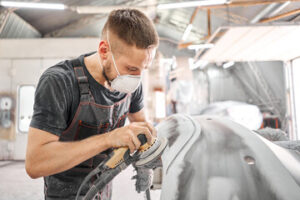Whether you’re seeking inspiration before your meeting or motivation during a long commute, Best Self Improvement Podcasts For Young Adults can help. The best ones offer advice on career, health, relationships, and more from thought leaders across industries.

This profoundly motivating podcast interviews athletes, business leaders, and thought leaders to inspire listeners to achieve their wildest dreams. Topics include how gratitude rewires the brain, productivity-boosting tactics, and physical fitness tips.
Podcasts are a great way to get inspired and learn new skills. They can improve your mental and emotional health, help you achieve your goals, and make your daily commute a lot more interesting. The key to success is listening regularly and applying the advice in your everyday life. It might take a while before you start to see the effects, but over time, self improvement podcasts can have a profound impact on your relationships, resilience, and sense of purpose.
Entrepreneur James Altucher hosts a popular podcast about personal growth and success. He interviews successful people and shares his own experiences. The podcast is useful for entrepreneurs and professionals who want to live a more fulfilling life. It covers topics such as minimalism, productivity, and entrepreneurship.
Optimal Living Daily is another self-improvement podcast with episodes that are short and easy to digest. This podcast is a good choice for busy individuals who need quick tips to enhance their lives. Each episode is no longer than five minutes and aims to provide listeners with practical strategies that they can implement right away.
The Self-Improvement Podcast is a great resource for those who are interested in personal and professional development. It features interviews with top speakers and authors. It also includes a section where you can ask questions and receive answers from the experts. The podcast is available on iTunes and Stitcher. It is recommended that you subscribe to the podcast to ensure that you don’t miss any episodes. The episodes are free to download, so you can listen on the go. This podcast is a must-have for all self-improvement enthusiasts. It will help you reach your full potential and become a better version of yourself.
The Minimalists
If you’re looking for self-improvement advice, there are plenty of podcasts available to help you get the most out of your life. Some of the best include “The Minimalists,” “How to be a Grownup”, and “WorkLife with Adam Grant.” These podcasts are helpful for those who want to improve their work-life balance, productivity, and mental health.
“The Minimalists” is a popular self-improvement podcast, hosted by New York Times bestselling authors Joshua Fields Millburn and Ryan Nicodemus. Their philosophy on minimalism empowers listeners to rid their lives of the things that don’t matter and live meaningfully with less. They discuss how to declutter your mind and body, and offer practical tips on living simply and reducing stress.
The podcast is available on Apple Podcasts, Stitcher, Player FM, Spotify, and more. Its episodes are short and informative, and the content is geared toward personal growth. You can subscribe to the podcast to receive daily episodes, and it’s free to download.
Lewis Howes interviews successful individuals to find out what makes them successful and how they overcome their obstacles. He also discusses the strategies they use to achieve their goals and explains how you can apply them to your own life. The podcast is an excellent source of motivation for anyone who wants to become a more successful person.
Jay Shetty
Taking the first step on your journey to self-improvement may be more difficult than you might expect. However, with a commitment to listen to a few podcasts every week and an open mind, you can grow your self-awareness, relationships, resilience, and sense of purpose. Although listening to these podcasts requires a significant investment of your time, the transformative wisdom that they share will have a lasting impact on your life.
Jay Shetty’s podcast is a popular destination for self-help and spiritual advice. He has spent three years living as a monk, practicing meditation and gaining insight from timeless philosophies. He now lives in a luxurious home in Hollywood Hills and records his podcast in a studio that overlooks the city lights.
His podcasts focus on a wide range of topics, including mindfulness and meditation, personal development and growth, relationships and communication, productivity, and career development. Many of his episodes are short and concise, which makes them easy to consume on the go. He also hosts interviews with motivational thought leaders, such as AJ Harbinger and Johnny Dzubak.
Other popular self-improvement podcasts include The School of Greatness, the Rich Roll Podcast, and The Minimalists. All of these podcasts offer helpful tips for improving your lifestyle and achieving your goals. However, it is important to note that not all self-improvement podcasts are created equal. Some podcasts may contain misleading or harmful information, so it is essential to research the content before consuming it.
Self Improvement Daily is a popular podcast that covers a variety of topics, including productivity, mental health, and relationships. Each episode is less than five minutes long and contains useful advice that can be implemented in your everyday life. The show is available for free on Apple Podcasts and has received positive reviews from its listeners.
On Purpose
For those looking for a self improvement podcast with an intellectual edge, this show has you covered. The TED Talk-style episodes explore topics such as mindfulness, flow, and the subconscious in ways that even the most skeptical listener will find interesting. The podcast is a great way to keep the motivation going and push yourself to achieve your goals.
This thought-provoking podcast delves into the science behind “woo-woo” self-help topics like Law of Attraction, flow, and intuition. The podcast features real people from all walks of life, including business owners, artists, and spiritual practitioners. The goal of this podcast is to teach people how to live a more meaningful and purposeful life.
Created by London Real Academy founder Brian Rose, this podcast features embodied teachers from all aspects of life. Guests include activists, authors, and politicians, as well as yoga instructors and meditation professionals. The podcast also hosts interviews with iconic guests such as Elizabeth Gilbert, author of “Eat, Pray, Love.”
With each engaging episode, this podcast delves into personal development and growth, focusing on enhancing relationships, boosting productivity, and finding meaning. The host, Jay Shetty, is a former monk who extracts transformational wisdom from today’s cultural leaders during insightful conversations.
Each episode of this podcast equips you with the scientifically proven skills you need to become your best self. AJ Harbinger and Johnny Dzubak, coaches at Mindvalley, lead each session with proven techniques that will improve your career, enrich relationships, boost confidence, overcome anxiety, and master the art of self-mastery.
Slate
Whether you’re looking for an extra shot of courage before a big work meeting, motivation to get up and run your first mile, or a new set of skills to boost your career, self improvement podcasts can be powerful tools. With a wide range of content and guests, these shows can teach you practical advice on all aspects of life—and help you find your voice as you pursue your goals.
Some of the most popular self improvement podcasts explore themes like mindfulness and meditation, personal development and growth, and relationships and communication. Others take a deeper dive into mental health and well-being, including anxiety management and relapse prevention. Still others offer insight into productivity and time management, as well as goal setting and achievement.
The success of any self improvement podcast is determined by its credibility and usefulness, which are largely achieved through the inclusion of expert guests. This can include psychologists, financial advisors, relationship coaches, and even athletes. Having guests that can provide relevant and relatable advice helps establish the podcast’s authenticity, while also adding a sense of fun.
In addition to a diverse selection of guest experts, many of the best self improvement podcasts offer regular releases. This allows listeners to incorporate the podcast’s advice into their daily lives and continually improve. While it may be hard to implement all of the advice on these podcasts at once, taking a small step each day can help you achieve your goals, while also improving your overall well-being and mindset.

